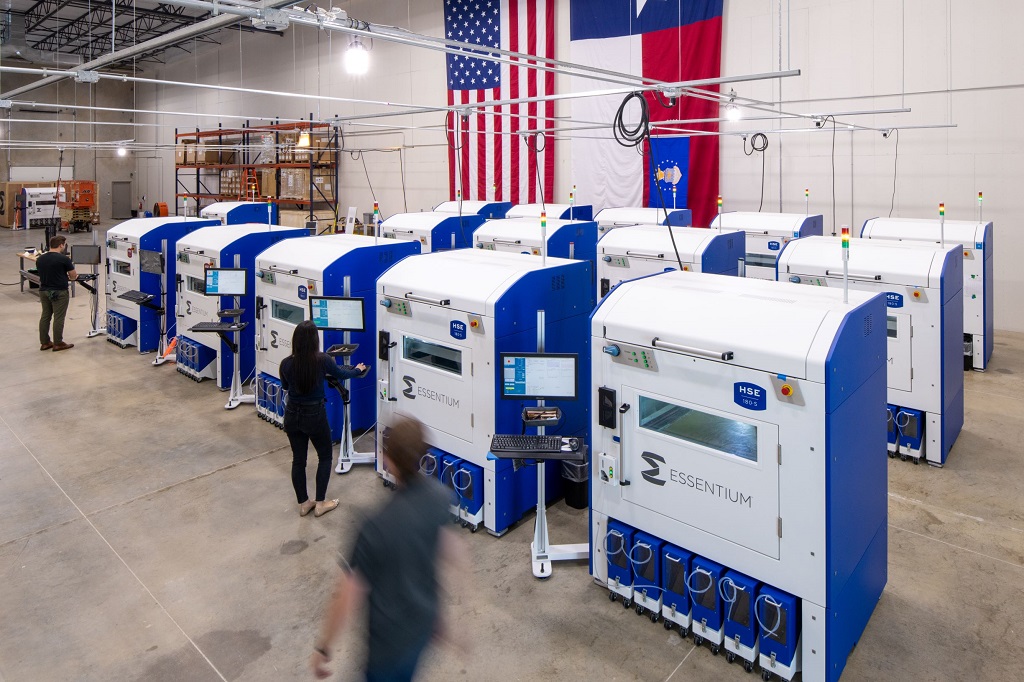
SPONSORED CONTENT
If the COVID-19 pandemic has taught us anything, it’s that supply chains can be disrupted suddenly and without any indication of how long the interruption will last.
The onset of a global pandemic would normally be a rather dire example of supply chain disruption, but in 2020 it’s all too real a circumstance. The closure of borders and shuttering of manufacturing and other facilities deemed “nonessential” has led to a sudden understanding of a need for a new plan when Plan A goes awry.
Manufacturers need to have a Plan B to keep their factory floors operational in the event of a disruption to their sources of raw materials, parts, and tools. This is even more critical for companies sourcing components from global suppliers.
3D printing is an excellent alternative for manufacturers to substitute for missing links in the supply chain caused by events beyond their control.
Supply Chain Preparedness
When the novel coronavirus emerged as first a viral outbreak and then a global pandemic, a sudden glaring light was shined on the structure of our existing supply chain structure. Its fragility was suddenly in this spotlight; who could have foreseen the speed at which manufacturers in China suspended operations and the impact it would have on global supply chains?
We’re familiar with isolated disruptions, but broad-scale interruptions are seen as likely to become increasingly common, rather than less common, in both near- and long-term projections.
“Business as usual” has become something of a quickly-distant memory. While manufacturers have struggled to operate as usual, times are anything but. Long-established supply chains have suddenly snapped, and especially in the early weeks of shutdowns, questions arose regarding how long this disruption might last, where and how to supply resources that were suddenly in short supply or simply unavailable. Rising costs and price gouging threw ROI equations out the window. Delays in shipment meant idle assembly lines and furloughed workers.
3D Printing And The New Supply Chain
Additive manufacturing can be an excellent alternative asset for manufacturers to fill gaps in the supply chain caused by events beyond their control.
The expert team at Essentium, which developed the High Speed Extrusion (HSE) 3D Printing Platform, has shared a few examples of how additive manufacturing can be used to avoid costly downtime:
Bring Production In-House
Manufacturers work furiously to qualify new suppliers around the world and source the parts they need at the lowest price. Manufacturers should be working to identify which parts currently purchased from a third-party supplier might be better developed internally.
Rather than wait for a part or tool to repair a machine, consider 3D printing as a practical alternative.
Cut Links Out of the Supply Chain
With additive manufacturing, manufacturers no longer need to vet as many external suppliers, negotiate pricing as often, or manage transportation logistics and costs as frequently. Simply procuring and stocking a variety of 3D printer filament materials allows manufacturers to save floor space otherwise dedicated to storage of tooling, molds, inspection fixtures, and associated grades of raw materials to make what they need when they need it.
Bringing high-speed additive manufacturing solutions on-premises allows production of the part in flexible quantities as needed, directly.
Accelerate Time-to-Market
Additive manufacturing accelerates time-to-market because manufacturers can print many of the parts they need in a matter of hours, rather than wait days or weeks to receive these parts from a supplier.
As designs may change or customer sentiments may rapidly shift, this type of flexibility allows more new product introduction (NPI) cycles or adaptation of an NPI cycle already in motion, facilitating faster market entry or adjustments to economic trends more quickly. While additive manufacturing cannot and will not totally replace traditional manufacturing, it can help companies cut unnecessary links out of the supply chain, reduce costs, transportation time and bring manufacturing back, well, to the point of manufacturing.
HSE 3D Printing To Be Prepared
Companies adopting a posture of preparedness to produce at least some of the parts and products needed to stay in business without relying solely on global suppliers will be in a stronger position to weather any future disruption to their supply chain.
The HSE 3D Printing Platform was already designed with manufacturing floor transformation in mind. Bringing this system to bear with a focus on preparing a new supply chain operation may accelerate that transformation. Strength, speed, and cost are among the keys for HSE operation, which Essentium states is 5-15x faster than the competition. We’ve wondered before whether their advanced capabilities mean that Essentium has essentially reinvented 3D printing.
The company’s strategies involve addressing customer needs quite directly, and with a variety of advanced materials capabilities.
Those customer needs have been changing along with market conditions — but Essentium’s commitment to solutions has been consistent. CEO Blake Teipel recently wrote a blog examining how 3D printing might fit into supply chain preparedness.
Perhaps the HSE 3D Printing Platform might be a solution worth looking into to help companies adopt a posture of preparedness and place less strain on their supply chains and help them be in a stronger position to weather disruptions in the future.
Via Essentium
